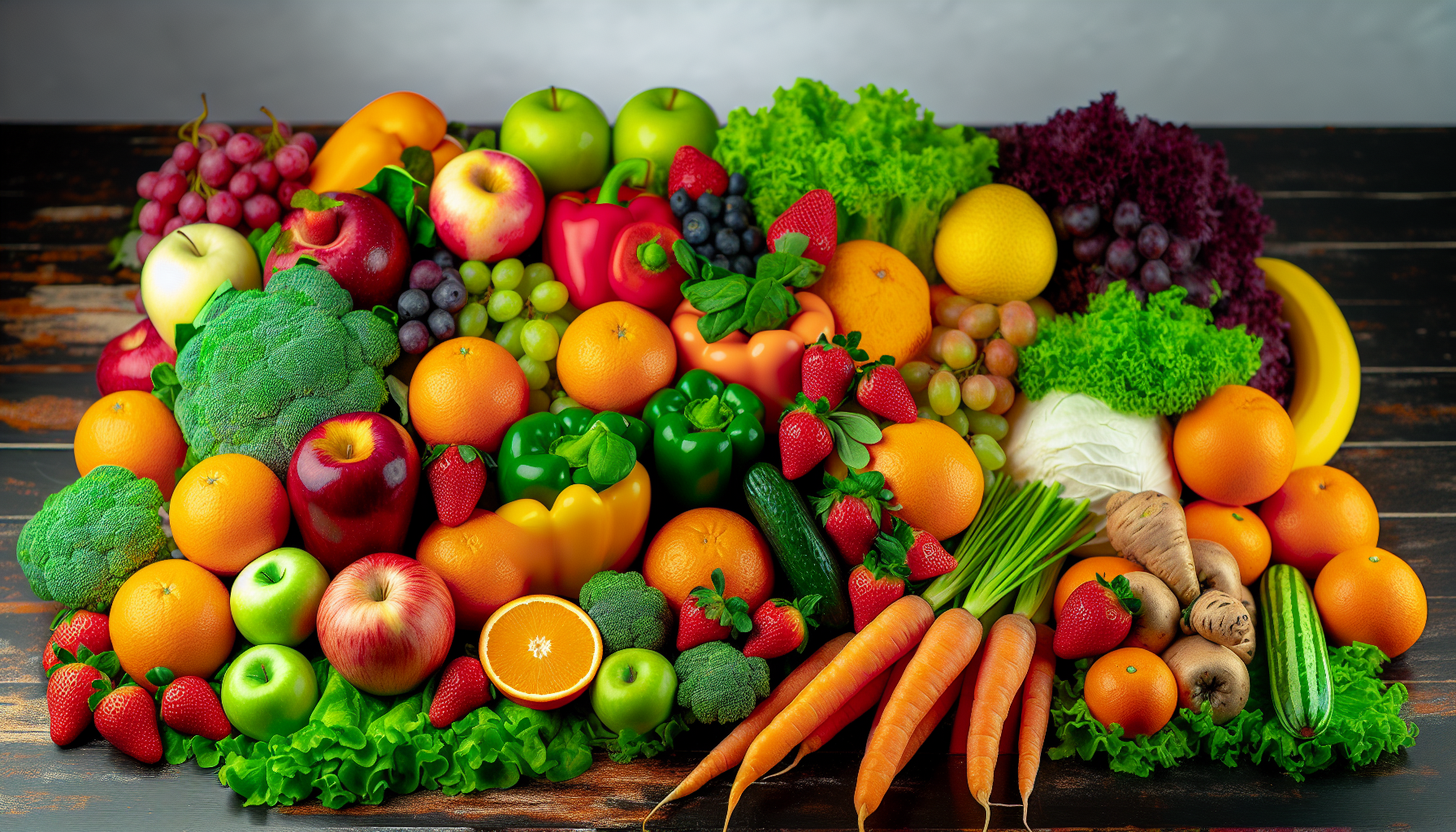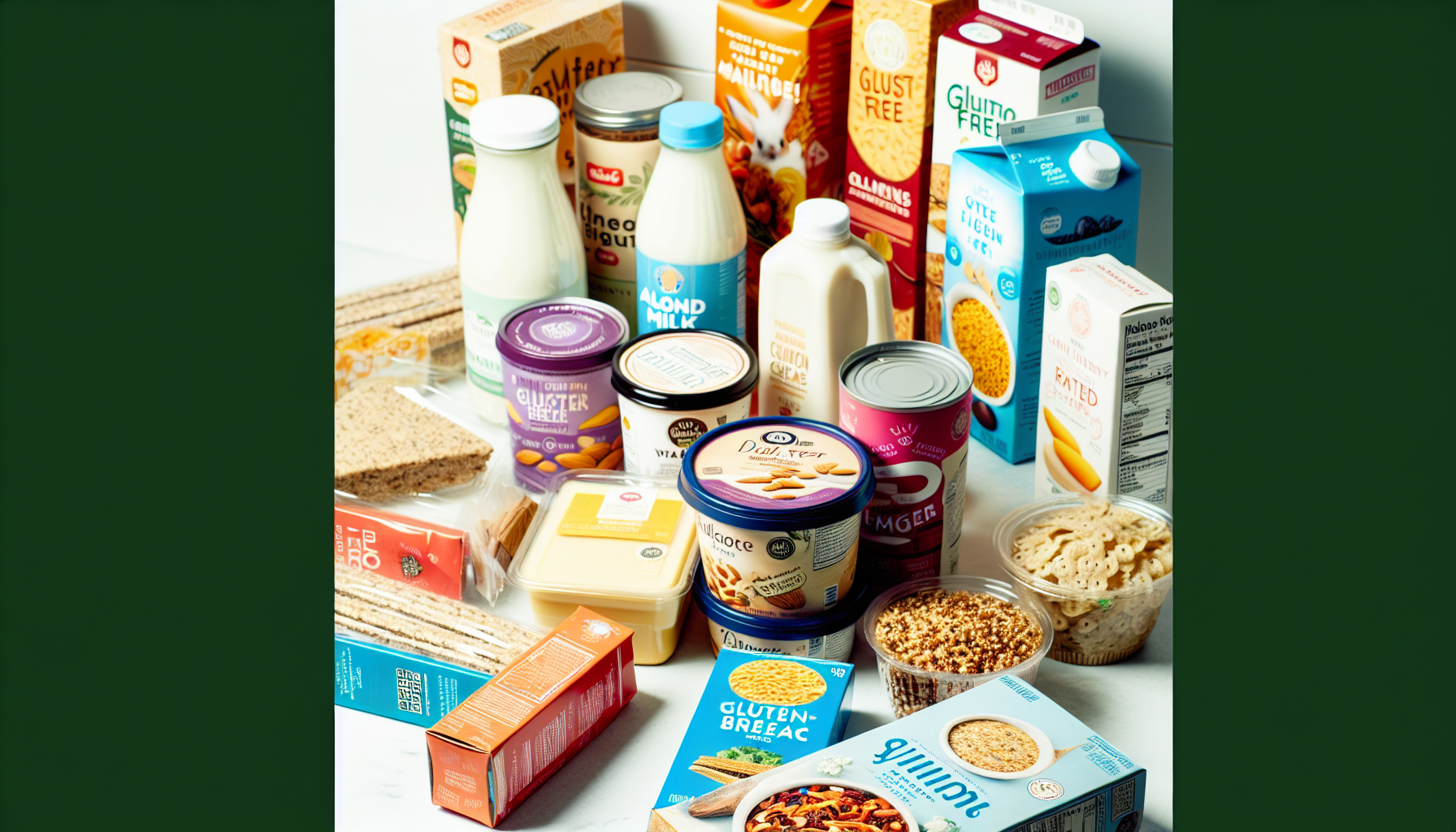Navigating dietary restrictions is essential for health and lifestyle. Whether due to allergies, intolerances, or personal choices, learn how to identify and manage these limitations for improved well-being and seamless social dining.
Key Takeaways
- Dietary restrictions, categorized as food allergies, intolerances, and ethical or religious dietary choices, necessitate distinct management approaches and impact numerous aspects of life.
- Understanding food allergies is crucial. It emphasizes identification, avoidance of allergens, and emergency preparedness, including the use of epinephrine auto-injectors in severe cases.
- Gluten sensitivity and celiac disease require a gluten-free diet; lactose intolerance necessitates managing dairy intake or choosing alternatives, highlighting the importance of food labels and personal strategies in addressing various dietary limitations.
Understanding Dietary Restrictions

Dietary restrictions can significantly influence an individual’s life. Comprehending their impact is imperative for the health and well-being of those affected. From a peanut allergy to being dairy-free, understanding these restrictions is vital, particularly when planning events or catering. Knowledge about common dietary restrictions, such as recognizing food allergy symptoms, can help prevent potentially life-threatening situations and ensure all guests’ dietary needs are met.
Incorporating unprocessed foods into one’s diet can also be crucial to managing dietary restrictions, as these foods are often recommended for their health benefits.
Reliable sources, like the Mayo Clinic, provide expert advice and information on this topic, including details on kosher foods. A broader understanding of dietary restrictions contributes to a more inclusive and safer environment.
Definition and Importance of Dietary Restrictions
Dietary restrictions refer to the limitations or prohibitions on certain foods or ingredients that an individual must follow for various reasons, such as health conditions, personal preference, or cultural or religious beliefs. These restrictions range from avoiding specific allergens to adhering to a diet for ethical reasons. Understanding and respecting dietary restrictions is crucial for ensuring the health and well-being of individuals, particularly those with life-threatening food allergies or chronic health conditions. For instance, someone with a severe peanut allergy must avoid all foods containing peanuts to prevent a potentially fatal reaction. Similarly, individuals with celiac disease must follow a strict gluten-free diet to prevent damaging their intestines. By being aware of and accommodating these dietary restrictions, we can create a safer and more inclusive environment for everyone.
Types of Dietary Restrictions

Dietary restrictions can be categorized into three main types: food allergies, intolerances, and ethical or religious practices. Each category has unique characteristics and requires a different approach to managing the restrictions.
When the immune system detects specific proteins in food, it can trigger adverse reactions, leading to food allergies. This can cause a range of symptoms and may require careful management of one’s diet. Preventing severe reactions hinges on understanding the safety of food allergies. On the other hand, dietary restrictions may also stem from personal or religious beliefs, leading to diets such as vegetarianism or veganism.
For example, the keto diet, a low-carbohydrate, high-fat diet, and the paleo diet, which focuses on unprocessed foods similar to those eaten by our Paleolithic ancestors, are popular dietary choices with their restrictions.
A more in-depth examination of these categories will provide a deeper understanding.
Food Allergies
Most food allergies are prevalent dietary restrictions, especially in young children. They occur when the immune system misidentifies specific proteins in food as harmful, leading to an allergic reaction. Some common food allergies include:
- Peanut allergies
- Milk allergies
- Egg allergies
- Wheat allergies
- Soy allergies
Peanut allergies are common among children, although adults can also be affected.
The symptoms of food allergies, including oral allergy syndrome, can range from mild to severe. Some common symptoms include:
- Hives
- Lip swelling
- Itchy skin
- Nausea or vomiting
- Diarrhea
- Abdominal pain
- Difficulty breathing
- Swelling of the throat or tongue
In severe cases, food allergies can lead to life-threatening symptoms such as anaphylaxis, which is a severe allergic reaction. Effective management of food allergies requires early recognition, avoidance of allergenic foods, and understanding exercise-induced food allergies that can precipitate allergic reactions during physical activity.
Intolerances and Sensitivities
While food allergies involve an immune response, food intolerances and sensitivities differ. They can cause discomfort or adverse reactions to certain foods, but are not life-threatening, like food allergies.
Many individuals with food intolerances or sensitivities find that avoiding processed foods can help alleviate their symptoms.
The most common food intolerances are lactose intolerance and gluten intolerance. Determining if you have a food intolerance or sensitivity can be achieved through allergy tests or by attempting an elimination diet.
Ethical and Religious Practices
Ethical and religious practices often dictate specific dietary choices. For instance, a kosher diet, which is part of Jewish law, involves:
- Eating certain animals
- Avoiding blood
- Keeping dairy and meat separate
- Following specific rules for slaughtering and meat processing.
For instance, while some religious practices allow followers to eat meat, others, such as certain sects of Hinduism and Buddhism, encourage abstaining from eating meat for spiritual reasons.
Similarly, the Islamic dietary standard, known as halal, outlines which foods are permissible according to Muslim law. It includes rules for how animals are raised and slaughtered, and bans certain foods. These dietary practices highlight the diversity of dietary restrictions and their roots in cultural, religious, and ethical beliefs.
Most Common Dietary Restrictions Overview
Dietary restrictions can arise from food allergies, intolerances, or other health conditions, often requiring careful management. Some of the most common dietary restrictions include vegetarianism, veganism, gluten-free diets, lactose intolerance, fructose malabsorption, low-FODMAP diets, keto diets, paleo diets, raw food diets, halal diets, and kosher diets. Each of these dietary restrictions has its unique requirements and limitations. For example, a vegetarian diet excludes meat but may include dairy and eggs, while a vegan diet avoids all animal products. Gluten-free diets are essential for individuals with celiac disease or non-celiac gluten sensitivity, as they require avoiding wheat, barley, and rye. Lactose intolerance necessitates avoiding or limiting dairy products, while a low-FODMAP diet helps manage irritable bowel syndrome (IBS) by reducing certain carbohydrates. Understanding and respecting these differences is essential to ensure the health and well-being of individuals with dietary restrictions.
Managing Food Allergies

Managing food allergies is a crucial aspect of dealing with dietary restrictions. It involves identifying allergens, avoiding them, and being prepared for emergencies. To effectively manage food allergies, it is essential to be vigilant and proactive in one’s approach.
A detailed examination of these aspects is warranted.
Identifying and Avoiding Food Allergens
Identifying and avoiding food allergens is the primary strategy in managing food allergies. Common allergens include milk, eggs, peanuts, soy, wheat, tree nuts, fish, and shellfish.
The key to avoiding allergens lies in carefully reading food labels. Food labels list ingredients and indicate the presence of any major food allergens. This information assists individuals with food allergies to avoid allergenic foods.
Emergency Preparedness
Being prepared for emergencies is another critical aspect of managing food allergies. Food allergic reactions can range from mild symptoms to severe, life-threatening reactions known as anaphylaxis.
To manage such emergencies, individuals with severe food allergies should always carry an epinephrine auto-injector, such as EpiPen®. This device treats severe allergic reactions by injecting a dose of epinephrine (adrenaline) to counteract the allergic reaction. Understanding when and how to use the auto-injector is vital in managing food allergies.
Gluten-Related Dietary Needs
Gluten-related dietary needs are another significant category of dietary restrictions. These include conditions like celiac disease and non-celiac gluten sensitivity, both of which require a gluten-free diet.
Celiac disease is an autoimmune condition in which gluten triggers an immune response that damages the small intestine. This can lead to a range of symptoms and health issues like:
- abdominal pain
- diarrhea
- weight loss
- skin rashes
- anemia
On the other hand, non-celiac gluten sensitivity causes similar symptoms but without the autoimmune damage to the small intestine.
Lactose Intolerance: Adapting Dairy Consumption
Lactose intolerance is a common dietary restriction that involves difficulty digesting lactose, a type of sugar found in milk and dairy products. This intolerance is due to a deficiency in the enzyme lactase, which breaks down lactose in the digestive system.
Managing lactose intolerance involves adapting dairy consumption. Some individuals can tolerate small amounts of lactose, while others may need to avoid lactose entirely. Options include using lactose-free dairy products or substitutes such as plant-based milk.
Special Diets for Health Conditions
Certain health conditions may necessitate special diets. For instance, a diet for liver disease usually focuses on:
- Consuming more carbohydrate foods
- Moderating fat intake
- Ensuring adequate protein intake, with a preference for lean protein options such as chicken, turkey, fish, dairy, or plant-based options like beans and tofu.
Another example is the raw food diet, which emphasizes consuming uncooked and unprocessed foods to maintain their natural nutrients.
Adherence to these dietary adjustments is vital for managing these conditions and enhancing overall health outcomes.
The Role of Food Labels in Managing Dietary Restrictions

Food labels are vital to managing dietary restrictions. These labels provide detailed information about the ingredients in food products, including the presence of any major food allergens.
The Food Allergy Labeling and Consumer Protection Act of 2004 (FALCPA) in the USA and Food Allergen Labelling in Canada mandate that manufacturers disclose the food source of all major food allergens used in their products on the package. This regulation ensures transparency and helps individuals with food allergies make informed decisions about their food choices.
Dining Out with Dietary Limitations
Dining out can be challenging for individuals with dietary restrictions. Clear communication with restaurant staff about dietary needs and restrictions is required.
Researching restaurants and their menus ahead of time, using special diet apps, or making a call to discuss menu options can also help ensure a safe and enjoyable dining experience. Adopting these strategies can transform dining out into a delightful experience, irrespective of dietary restrictions.
Preparing Meals for Diverse Dietary Needs
Preparing meals for diverse dietary needs requires careful planning and consideration. This is especially important during shared meals, as it ensures everyone feels comfortable and included in the dining experience. Incorporating unprocessed foods into meal planning can help accommodate various dietary restrictions and promote healthier eating habits.
Choosing a restaurant or menu that offers a variety of options can cater to everyone’s dietary needs. Ensuring the meal location is easily accessible and affordable makes everyone feel respected and included.
Planning Events with Dietary Restrictions
Planning events with dietary restrictions requires careful consideration and attention to detail. It is essential to ask guests about their dietary restrictions in advance and provide a variety of options that cater to different needs. This can include offering vegetarian, vegan, gluten-free, and other unique diet options. For instance, a buffet might feature a range of dishes, such as a gluten-free pasta salad, a vegan quinoa bowl, and a lactose-free dessert. It is also crucial to ensure food is prepared and handled safely to avoid cross-contamination and allergic reactions. This might involve using separate utensils and cooking surfaces for allergen-free dishes. Event planners can ensure that all guests feel included, respected, and have a positive and enjoyable experience by taking these steps.
Catering for Special Diets
Catering for special diets requires a deep understanding of guests’ dietary restrictions and preferences. This includes being aware of the ingredients and preparation methods used in various dishes and being able to offer alternatives for guests with specific dietary requirements. For example, a caterer might provide a dairy-free cheese option for guests with lactose intolerance or a nut-free pesto for those with nut allergies. Labelling dishes clearly and providing information about ingredients and allergens is also essential to ensure that guests can make informed choices. This may involve signage or menu cards that highlight common allergens and dietary restrictions. Event planners can ensure that all guests feel included and respected and have a positive and enjoyable experience by catering to special diets.
The Intersection of Diet and Lifestyle
Our lifestyle and personal beliefs significantly influence our dietary choices. Age, education, and social influence can affect our food choices.
Personal beliefs can shape our views on food and influence our dietary choices. Our attitudes, preferences, and aversions to certain foods can all be influenced by our beliefs and experiences.
Navigating Children’s Dietary Restrictions
Parents and caregivers often find it challenging to navigate children’s dietary restrictions. Clear communication with school staff and healthcare providers about the child’s dietary restrictions is a prerequisite for effective management.
Ensuring the child’s safety involves taking the following steps:
- Getting a medical statement from the family doctor
- Checking with the school district or principal about communication protocols
- Keeping open communication with the school staff
Technological Advances in Dietary Management

Technological advances have simplified the management of dietary restrictions. Many dietary management apps and online resources offer practical tips, guidance for meal planning, and strategies for informed decision-making.
Innovative food products have also been developed to cater to individuals with dietary restrictions. These technological advances are revolutionizing the management of dietary restrictions, offering more options and greater flexibility.
Frequently Asked Questions
What is an example of a restricted diet?
An example of a restricted diet is a vegan diet, which is more restrictive than a vegetarian diet. For instance, while many vegetarians avoid eating meat, some may still consume dairy and eggs. Vegans avoid all animal products, while vegetarians avoid meat, including chicken, turkey, beef, pork, and fish.
What are the strange dietary restrictions?
Some unusual dietary restrictions include breatharianism, which advocates for living without food and water, and fruitarianism, which involves eating only fruits, nuts, and seeds. Individuals may also have specific dietary restrictions due to allergies or cultural beliefs.
How do you ask for dietary restrictions?
To ask for dietary restrictions, use a general question like “Are there any dietary restrictions I should be aware of?” instead of making assumptions about specific restrictions, which could be insulting. Let them tell you about their particular requests.
What are the 10 most common food allergies?
Eight foods are responsible for the 10 most common food allergies. Major food allergens include milk, eggs, peanuts, tree nuts, fish, shellfish, soy, and wheat.
How do you manage food allergies?
To manage food allergies, it’s essential to identify and avoid foods that contain allergenic ingredients. Also, always be prepared for emergencies by carrying an epinephrine auto-injector.
Summary
This article has explored the complex landscape of managing dietary restrictions, from food allergies to gluten intolerance, ethical dietary practices, and diets for specific health conditions. We have discussed the importance of understanding these restrictions, strategies for managing them, and the role of technology in assisting individuals with dietary restrictions. The journey towards managing dietary restrictions may be challenging, but it can be made more manageable with the proper knowledge and resources.









